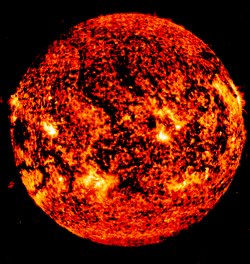 September 3, 2015 John E. Ross, KD8IDJ, Editor
| |||||||
ARRL Headquarters Will Be Closed on Labor Day, September 7! ARRL Headquarters will be closed on Labor Day, Monday, September 7, and there will be no W1AW bulletins or code practice on those days. ARRL Headquarters will reopen at 8 AM Eastern Time on Tuesday, September 8. We wish everyone a safe and enjoyable holiday! Please note: Since parts of the FCC website are down for maintenance, some FCC-related links in this edition of The ARRL Letter will not work properly until the maintenance has been completed. ARRL "Clarity on Amateur Radio Parity" Statement Separates Fact from Fiction The ARRL has taken steps to address objections and concerns recently raised by representatives of community associations about the Amateur Radio Parity Act of 2015 -- H.R. 1301 and S. 1685. A statement released on August 28, "Clarity on Amateur Radio Parity," makes it clear that the bill would not create new federal policy with respect to outdoor amateur antennas. As it points out, the FCC already recognizes a strong federal interest in effective Amateur Radio communication from residences and has adopted a limited preemption of state and local regulation of Amateur Radio antennas. The Amateur Radio Parity Act of 2015 would extend the limited preemption to private land-use restrictions.
The legislation also does not prohibit community associations from reviewing proposed ham radio antenna installations or from having final approval; it limits restrictions to those necessary to accomplish an association's legitimate purposes -- such as safety and aesthetics. The bill does not mandate that a particular size of antenna be permitted, as long as size and placement restrictions do not prohibit, but reasonably accommodate, Amateur Radio communication. "Claims that the bill will do any of these things are simply wrong, and are either misunderstandings of the plain language of the bill or deliberate misrepresentations," the ARRL statement asserted. As introduced in both the House and Senate, the bill recognizes that the federal interest in effective Amateur Radio communication remains the same, whether a residence is subject to state and local regulations, to private land-use restrictions, or both. ARRL Supports Maximum Flexibility for Amateur Use of New 2200 and 630 Meter Bands The ARRL has told the FCC that Amateur Radio operation in the new 135.7-137.8 kHz (2200 meters) and 472-479 kHz (630 meters) bands should be as unfettered as possible from a regulatory standpoint. The League spelled out its case August 31 in detailed comments that argue in favor of flexible FCC Part 97 regulations in light of the exceptionally low interference potential to unlicensed power line carrier (PLC) systems that utilities use to manage the power grid. In its April Report and Order, Order, and Notice of Proposed Rulemaking (R&O/NPRM) in ET Docket 15-99, the FCC had raised several questions regarding how Amateur Radio and PLC systems might coexist. The ARRL said, in its view, there is little to no evidence that Amateur Radio operation would be incompatible on the LF spectrum, where the great majority of PLC systems are deployed, and that few, if any, PLCs operate in the MF band.
The League asserted that "well-established notification procedures conducted entirely in the private sector," as well as the sharing of available database information, should facilitate compatible operation. "Notification procedures will be necessary only in those predictably few instances in which geographic proximity and co-channel or overlapping channel operation occurs," the ARRL added. The League requested that the FCC finalize service rules for 2200 meters that the ARRL outlined, and that it create the proposed 630 meter allocation. Operation on 2200 meters would be limited to 1 W EIRP, and operation on 630 meters held to 5 W EIRP, in both cases with an absolute EIRP transmitter output limit of 1500 W PEP and a 200 foot maximum antenna height. Assuming continued PLC compliance with Part 15 rules, the ARRL argued, "there is no significant interference potential to PLC systems, operated on an unlicensed basis, in that very small segment of the 9-490 kHz band that is available for PLC operation, even at separation distances of less than 1 kilometer from the transmission line. At distances of 1 kilometer or more, there is no chance of interference to a PLC line whatsoever, and no restrictions on Amateur operation outside of that distance need be imposed."
The ARRL said PLCs that might be operating in the two bands should be frequency agile enough to relocate to frequencies falling outside the proposed allocations, making additional regulations unnecessary. The League has conducted a lengthy and ongoing experimental operation (WD2XSH) on 630 meters. It pointed out that it was "unaware of any reports of interference to PLC systems arising from that operation, conducted pursuant to numerous Part 5 experimental licenses...in the large band utilized by PLCs." The League agreed with the FCC's proposal to make both 2200 and 630 meters available to Amateur Extra, Advanced, and General licensees. The ARRL also said the FCC should provide "maximum flexibility with emission types" throughout 630 and 2200 meters, including CW, RTTY, data, and even phone and image, the last "especially at 630 meters." The ARRL also commented on the FCC's proposal to amend its Part 80 rules to permanently authorize radio buoy operations in the upper half of 160 meters, which the Commission recently elevated to primary for Amateur Radio. "[S]hould the Commission proceed with its proposal...to make the 1900-2000 kHz band available to commercial fishing vessels for use by radio buoys on the open sea and to include them in the equipment authorized as part of a ship station license, it should not do so by means of a primary allocation for these devices in ITU Regions 2 and 3 as proposed," the League said. "The entitlement to utilize radio buoys should be on a secondary basis to the Amateur Service...and the buoys should be prohibited from causing harmful interference to Amateur stations without qualification." Read more. Reminder -- FCC Universal Licensing System Down for Maintenance until September 8 The FCC Universal Licensing System (ULS) and other FCC website public applications went down for maintenance on September 2 at 2200 UTC and will remain unavailable until 1200 UTC on Tuesday, September 8. The outage will also affect the Electronic Comment Filing System (ECFS) and the Electronic Document Management System (EDOCS). During the ULS outage, it will not be possible to file any Amateur Radio applications, including examination session documents, or conduct any license or application searches.
The FCC said this week that its Daily Digest will be "paused" starting on September 3, but will resume "when the systems are available again." "The FCC does not plan to release any official documents during the IT upgrades," the FCC said on September 1. "That said, the Commission will have in place a mechanism to allow for a hard copy release of an item should there be a pressing need. Any such releases that would ordinarily appear in the Daily Digest will be included in the Daily Digest when it is next issued. Thank you for your patience, and we apologize for any inconvenience." The FCC's August 20 Public Notice has complete details on the planned outage. FCC Proposes Bumping Arizona Radio Amateur's License Back to Former Call Sign The FCC has told an Arizona radio amateur who was granted a vanity call sign within the 2-year waiting period on the basis of being a close relative of the previous holder that the relationship cited was not close enough. The FCC Wireless Telecommunications Bureau (WTB) on The WTB's Mobility Division noted that Babb had earlier filed four other vanity applications seeking various "JB" suffix 1 × 2 call signs, including W3JB. All were dismissed, either because they fell within the 2-year waiting period or the FCC had already randomly selected a competing application. Responding to the Bureau's request to document his relationship to the deceased former holder of W3JB, Babb replied that Birch was his "grandfather's mother's brother." "Mr Babb's response to the Division's inquiry indicates that Mr Birch was his great-great uncle," the FCC said. "This does not exempt Mr Babb from the 2-year waiting period for call sign W3JB. The exemption applies only to specified close relatives. The relationship claimed by Mr Babb is too distant to qualify." The Division concluded that granting Babb the call sign W3JB was improper and proposed that modifying Babb's license to replace W3JB with KD7HLX, his former call sign, would be appropriate. The WTB will not issue a modification order, however, until Babb has been notified of the proposed action and has had an opportunity to file a protest, which he must do in writing within 30 days. ARISS Issues Invitation to Schools, Educational Organizations, Groups Amateur Radio on the International Space Station (ARISS) is inviting proposals from schools, educational organizations, and groups that are willing and able to host an Amateur Radio contact with an International Space Station crew member. The window for formal and informal proposals will be open from September 1 until November 1, 2015. ARISS anticipates that the contacts will be scheduled between July 1 and December 31, 2016. Crew schedules and ISS orbits determine exact contact dates.
To maximize these radio contact opportunities, ARISS is looking for organizations that will a draw large number of participants and integrate the contact into a well-developed education plan. Because of the nature of human spaceflight and the complexity of scheduling activities aboard the ISS, organizations must demonstrate flexibility to accommodate changes in contact dates and times. Full information on hosting an ARISS contact is available on the ARRL website. To help organizations in preparing their proposals, the ARISS Program Coordinator will offer hour-long online information sessions. These are designed to provide more information regarding US ARISS contacts and the proposal process and offer an opportunity to ask questions. While attending an online information session is not required, it is strongly encouraged. These will be offered on Thursday, September 17, at 2000 UTC; on Tuesday, September 22, at 2000 UTC, and on Wednesday, September 30, at 2300 UTC. Advance registration is necessary. E-mail ARISS to sign up for an information session. ISS crew members will participate in scheduled Amateur Radio contacts, which last about 10 minutes, and allow students and educators to interact with the astronauts in a question-and-answer format. Visit the ARISS website for more information. Contact ARISS with any questions. Read more. The ARRL September VHF Contest Beckons! The ARRL September VHF Contest gets under way on September 12 at 1800 UTC and wraps up on September 14 at 0259 UTC. This operating event provides a chance for radio amateurs at all levels to experience contesting on the most popular VHF and UHF bands, as well as on those less-frequented frequencies above 450 MHz.
Assistance now is allowed for all entry categories. This includes announcing your own availability for contacts (ie, self-spotting.) Don't forget about the Single Operator 3 Band and Single Operator FM Only categories that allow stations with limited equipment to get in on the fun. Six meters is the most popular band for this event. Most SSB activity there takes place between 50.125 MHz and 50.250 MHz, and CW activity between 50.080 MHz and 50.100 MHz. The frequencies between 50.100 MHz and 50.125 MHz are considered a "DX window" for contacts between US/Canada stations and DX stations, so avoid US/VE-to-US/VE contacts in that part of the band. Rules and entry forms are on the ARRL website. For more information about the ARRL September VHF Contest, e-mail the ARRL Contest Branch. Read more. Amateur Repeaters Fall Victim to Washington Wildfire Two Central Washington repeaters, owned and operated by the Lake Chelan Amateur Radio Club, have been destroyed by one of the wildfires raging in that state. The co-located machines, one on 2 meters and one on 6 meters, were sited on Slide Ridge near Manson, Washington, in Chelan County. On August 27, the First Creek Fire completely leveled the building housing the repeaters. Scorched antennas and support structures are still standing but are likely beyond repair. The club's Roger Odorizzi, W7CH, said the repeaters had been offline for several days.
"We knew the fire had wiped out the power going to our site, but we hoped for the best, that our mountaintop building was possibly spared," he said. "Now we have confirmation this was not the outcome." Odorizzi said the area remains closed, and the club likely will not have access to it "for a long time." The club's Ken Rau, K7YR, said the loss, in addition to the building, included the two repeaters, duplexers and antennas. The repeaters provided coverage in North Central Washington. Rau told ARRL that it's unlikely that the building housing the repeaters would be replaced. It once housed radio and TV broadcast translators, most no longer in use. Topography is also a factor. "This is a mountain site -- 4900 feet above mean sea level -- with power lines that were installed on a very steep slope." Odorizzi said the club's foresight in tending the area around its 440 MHz FM repeater, located northeast of the city of Chelan, paid off. Although the fire took out power for 3 days, the 70 centimeter repeater site was saved because club members had taken care to clear brush and weeds from a wide perimeter around the building housing the machine. "Get out there and do some weed abatement. The repeater you save may be your own!" Odorizzi said in a September 1 message. "The two repeaters we lost were on another mountaintop but were surrounded with a brushy area." Odorizzi said recent rainfall in his area has helped to dissipate the smoke from the wildfires and dampened the flame-charred ground. Much cooler weather also was making life easier for the firefighters. "Locally, fire is not a threat now," he added. Ham-Cyclist Completes US Leg of His Trip Around the Globe Cyclist Thomas Andersen, OZ1AA/K9DXX, completed his 6-week ride up the US East Coast on August 29 and is now in the Canadian Maritimes, the 38th country he has visited beginning his "Cycling the Globe" adventure in Copenhagen 5 years ago. Andersen has already put more than 26,000 miles on his bicycle -- more than the distance around the equator. Along the way, he has been availing himself of ham radio hospitality. On the US leg, which he began in Key West, Florida, he often stayed with fellow radio amateurs and made many new US friends on his trip.
"From the southernmost point in Key West, Florida to the easternmost point in Lubec, Maine -- what an incredible ride through the US!" Andersen posted on his Facebook page. "A heartfelt thank you to all who helped along the way. The hospitality has been unlike anything else I experienced on this trip." While visiting West Quoddy Head Light in Lubec, Maine, over the weekend, Andersen told ARRL that he plans to finish up his North American visit in Newfoundland, Canada, which was still some 1000 miles away at that point. After crossing the border from Maine into New Brunswick, he stopped over at the home of Andy McLellan, VE9DX, near St John, before heading off again to Nova Scotia. Once he reaches Newfoundland, Andersen will catch a flight back to Denmark for a 3-month break to visit with his family "and to earn some money." Right after Christmas he'll complete his round-the-world journey in Africa, along a route he has not yet determined but, he said, "probably somewhere in West Africa." His idea is eventually to head through Morocco and then to Spain on his way home to Denmark. While in Eastern Maine, Andersen, who enjoys CW DX contesting, got together with a couple of contesting notables -- Pat Sonnier, W5WMU, and Scott Redd, K0DQ -- at Sonnier's second home and the site of W1WMU. Andersen stayed with the Sonniers before heading off into the Maritimes. He said Maine reminded him somewhat of Scandinavia.
In Florida, and later in Connecticut, he was a guest of another top-tier contester, Dan Street, K1TO. He also visited with other well-known figures in radiosport, including Doug Grant, K1DG, and Randy Thompson, K5ZD. Andersen also visited the New England Division Convention in Boxboro, Massachusetts, over the August 21-23 weekend and visited the ARRL booth. As for his favorite stops, he said he enjoyed Savannah, Georgia, and Charleston, South Carolina, the best. Andersen told ARRL that he typically can cover 60 miles in a day, but he's done as much as 100 miles. The last leg of his US trip -- mostly on US Route 1 from Hancock to Lubec, Maine -- covered some 80 miles. While he does carry a VHF/UHF FM handheld, Andersen said he really hasn't used it that much. He said he "definitely" wants to have some sort of HF radio with him as he travels through Africa, however.
WRTC 2018 Organizers Map Event Strategy World Radiosport Team Championship 2018 (WRTC 2018) organizers have picked the Jessen/Wittenberg area near Berlin, Germany, to stage the next international Amateur Radio competition. On August 15, the Organizing the project was the main focus of the August 15 meeting. Treasurer Wolfhard Goldschmidt, DL9ZWG, reported a sound fiscal start, mainly due to numerous donations already received from German radio amateurs. Committee Chair Christian Janssen, DL1MGB, demonstrated the project management tool that WRTC 2018 will use and outlined the project schedule. Michael Hoeding, DL6MHW, will handle public relations, while Ben Buettner, DL6RAI, will oversee IT issues. An important discussion topic concerned the 60 or more sites that will be needed to mount WRTC 2018. With the support of radio amateurs in Saxony and Brandenburg, Organizing Committee member Andreas Winter, DK4WA, has mapped out some 80 promising sites, with close attention being paid to environmental concerns. Winter will assume regional responsibility for all WRTC 2018 activities in the Jessen/Wittenberg area. The WRTC 2018 Organizing Committee is still fine-tuning operating rules and guidelines for the event. Uwe Koennecker, DL8OBF, will prepare a draft of the rules for WRTC 2018 within the next few weeks. The WRTC Organizing Committee will meet again next March.
"It's all about securing sites that are as identical as possible from a technical and radio standpoint and recruiting volunteers for the construction of stations and antennas," the WRTC 2018 website noted. "And it's also naturally about coming up with the necessary finances and sponsors for such a competition, which might be compared to auto racing in terms of its sophisticated mix of technical know-how and individual skill." World Radiosport Team Championships are typically held every 4 years. The events feature some 60 two-operator teams from around the world in an on-the-air competition, held in conjunction with the IARU HF World Championship. Potential competitors will be attempting to qualify this year and next on the basis of their scores in 32 operating events. In Brief...
The K7RA Solar Update Tad Cook, K7RA, Seattle, reports: Over the August 27-September 2 reporting week, average daily sunspot numbers were 48.3. That's 21.4 points lower than the previous 7 days. Similarly, average daily solar flux declined 22.7 points to 97. New sunspot groups appeared, one per day, on August 27, 29, 30, 31, and September 1, but activity is still very weak, and the sunspots are not magnetically complex or strong. It's early September, so we can look at some monthly sunspot number averages. For May through August monthly averages of daily sunspot numbers were 83, 77.4, 68.5, and 61.7, respectively. That reflects a steady decline in activity. The latest NOAA/USAF predicted solar flux values for the near term are 85 on September 3-4; 90 on September 5-8; 85 on September 9-10; then 95 and 115 on September 11-12; 115 on September 13-22; then 110, 105, and 100 on September 23-25; 90 on September 26-28, and bottoming out at 85 on September 29-October 7. Although this is a long way out, predicted flux values then rise to 115 on October 10-17. Planetary A index predictions show values of 12 on September 3-4; then 9, 8, and 10 on September 5-7; 8, 6, and 8 on September 8-10; 5, 12, and 15 on September 11-13; then 10, 8, and 10 on September 14-16; 5, 8, 20, and 10 on September 17-20; 5 on September 21-23; and 15, 10, 5, 8, 20, and 22 on September 24-29. A quiet period with planetary A index at 5 is predicted for October 4-8. As Spaceweather.com reports, 156 years ago on September 2, 1859, the huge Carrington Event occurred -- a monster geomagnetic storm in which a 1 billion ton coronal mass ejection (CME) smashed into Earth, setting fire to telegraph stations around the world. In Friday's bulletin, we'll have a revised forecast plus reports from readers, including one from Randy Crews, W7TJ. Send me your reports and observations. Just Ahead in Radiosport
See the ARRL Contest Calendar for more information. Upcoming ARRL Section, State, and Division Conventions and Events
Find conventions and hamfests in your area.
. . .
Subscribe to...
Free of charge to ARRL members...
| |||||||
 "Congress and the FCC already have acted to prohibit restrictions that prevent the installation of direct-to-home satellite dishes, TV antennas, and customer-end wireless broadband antennas," the statement said.
"Congress and the FCC already have acted to prohibit restrictions that prevent the installation of direct-to-home satellite dishes, TV antennas, and customer-end wireless broadband antennas," the statement said. "The allocation of the 2200 meter band, together with the proposal to adopt flexible rules for the use of that first LF allocation, and the proposal to allocate the 630 meter band for amateur use, when implemented, will complete at least a basic complement of Amateur Radio allocations in all portions of the radio spectrum domestically," the ARRL told the FCC. "It is readily apparent from the record...that there can most assuredly be compatible operation by amateur stations in both the 2200 and 630 meter bands without adverse interaction with PLCs."
"The allocation of the 2200 meter band, together with the proposal to adopt flexible rules for the use of that first LF allocation, and the proposal to allocate the 630 meter band for amateur use, when implemented, will complete at least a basic complement of Amateur Radio allocations in all portions of the radio spectrum domestically," the ARRL told the FCC. "It is readily apparent from the record...that there can most assuredly be compatible operation by amateur stations in both the 2200 and 630 meter bands without adverse interaction with PLCs."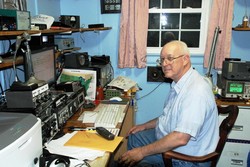
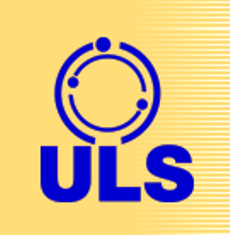 While the requirement to pay a regulatory fee for Amateur Radio vanity call sign applications officially ended as of September 3, prospective vanity applicants now will have to wait until after 1200 UTC on September 8 to file an application for an available call sign. The FCC has told ARRL that the approximately 18-day vanity call sign waiting period will remain in place "for now."
While the requirement to pay a regulatory fee for Amateur Radio vanity call sign applications officially ended as of September 3, prospective vanity applicants now will have to wait until after 1200 UTC on September 8 to file an application for an available call sign. The FCC has told ARRL that the approximately 18-day vanity call sign waiting period will remain in place "for now.".jpg) August 26
August 26 
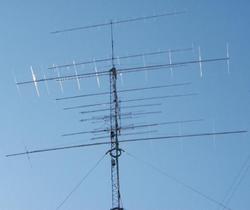 Newcomers and veterans alike will attempt to work as many 2 × 1 grid squares as possible on frequencies above 50 MHz from home stations, from the field, or from "rovers" that travel from grid square to grid square. With a heightened potential for tropospheric conditions, the September VHF Contest offers something that VHF contests at other times of the year often cannot.
Newcomers and veterans alike will attempt to work as many 2 × 1 grid squares as possible on frequencies above 50 MHz from home stations, from the field, or from "rovers" that travel from grid square to grid square. With a heightened potential for tropospheric conditions, the September VHF Contest offers something that VHF contests at other times of the year often cannot.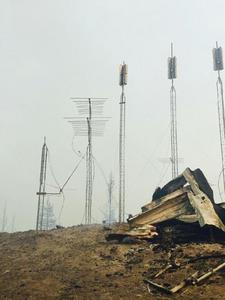
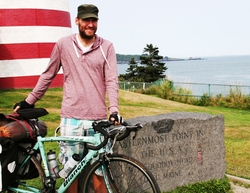
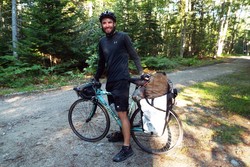

 WRTC 2018 Organizing Committee met in Jessen for a workshop, and the town's mayor, Michael Jahn, expressed his pleasure that his community was picked to host the "Olympic games of Amateur Radio."
WRTC 2018 Organizing Committee met in Jessen for a workshop, and the town's mayor, Michael Jahn, expressed his pleasure that his community was picked to host the "Olympic games of Amateur Radio."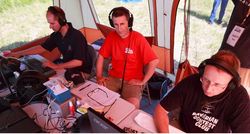
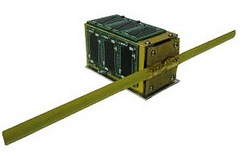 $50SAT Goes Silent: It appears that the
$50SAT Goes Silent: It appears that the .jpg) FCC Fines New York CBer for Using RF Amp, Causing Interference: The FCC has levied a $2400 fine on Lewiston, New York CBer James Engle for operating his station with an unauthorized amplifier and intentionally interfering with CB communications. The FCC released a
FCC Fines New York CBer for Using RF Amp, Causing Interference: The FCC has levied a $2400 fine on Lewiston, New York CBer James Engle for operating his station with an unauthorized amplifier and intentionally interfering with CB communications. The FCC released a 